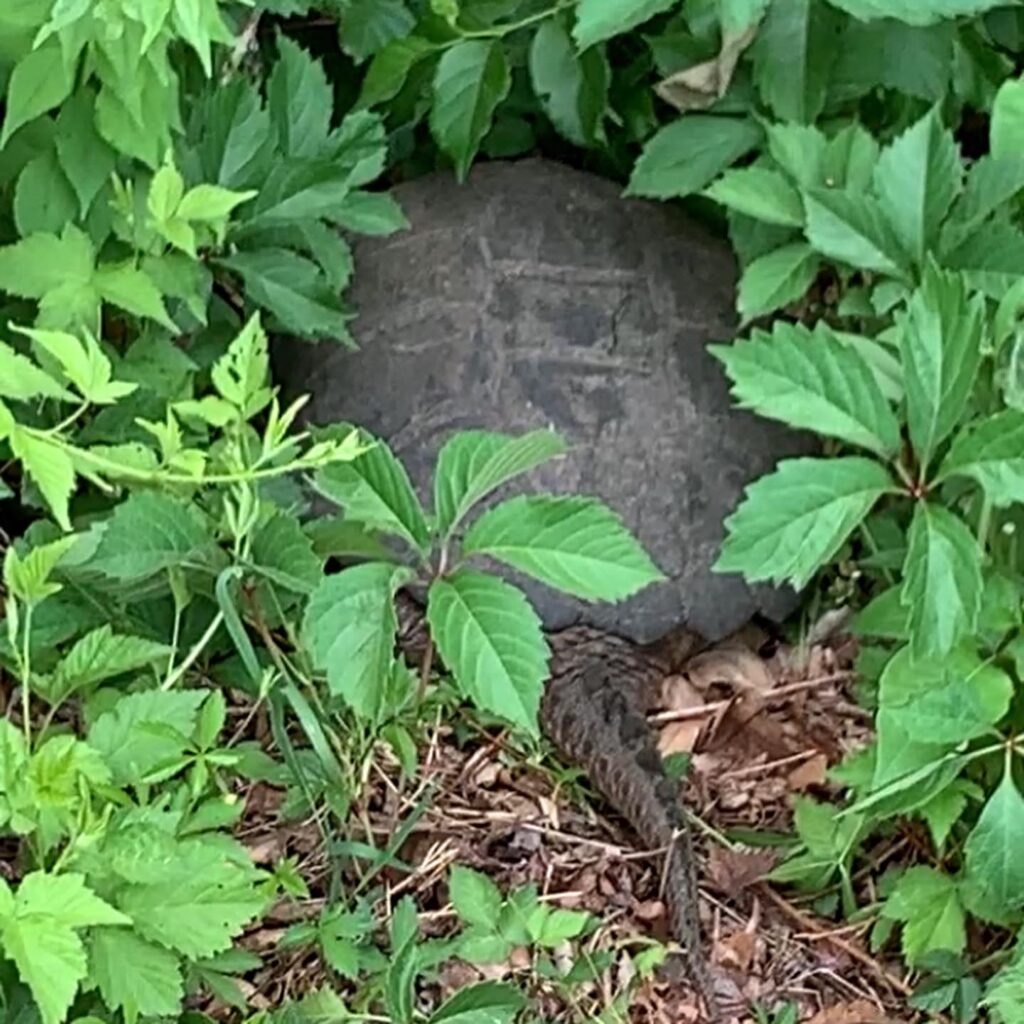Wildlife Sightings in 2020
October 29, 2020 • Tim O'Brien with eyes and ears from all of 2020 farm staff

This season the farm staff has generated an impressive list of wildlife in and around the farm. There are many reasons we may have noticed more this year than ever before: more naturalists amongst the crew, more wildlife finding food; and shelter and safety in the ecosystem building from our no-till, regenerative farming practices. Whatever combination of reasons, what a joy to have so much company as delight and distraction during the long hours of a farming day.
Birds
- American Crow
- American Goldfinch
- Loves to pick out and eat the seed of the purple seed heads of anise hyssop
- American Robin
- Bald Eagle
- Baltimore Oriole
- Briefly visited the farm to feed on the apple tree nectar in the spring. Very shy, tried to hide at the top of the apple tree.
- Belted kingfisher
- Flew over the farm a few times in the spring. Not uncommon birds, but odd sighting at the farm considering that they prefer to stay close to bodies of water
- Black-billed Cuckoo
- Rare bird! Vocalizations heard only twice or so about a half mile or so into the woods to the west, very early in the morning.
- Black-capped chickadee
- Bluejay
- Carolina Wren
- Cedar Waxwings
- Common Raven
- Cooper’s Hawk
- Eastern Bluebird
- Eastern Wood-Pewee
- A sign of the peak of summer, one of, if not the last bird species to migrate back. Pewees like to sing in the hottest heat of summer. Heard only a few times in the distance as they tend to avoid open areas
- Golden winged warbler
- A nice spring warbler with a high-pitched song.
- Gray Catbird
- Many catbirds lived in the brush of the cul de sac at the entrance to the farm
- Great Blue Heron
- Great-Crested Flycatcher
- Lots of vocalizations from this bird, and a few sightings on the edges of the woods. Also tends to avoid open fields, but was seen at the apple tree in the welcome garden a few times in the spring
- Greater yellowlegs
- Green Heron
- House Sparrow
- Nested in the new pavilion with the drying garlic
- House Wren
- Least Sandpiper
- Northern Cardinal
- Northern Flicker
- Orchard Oriole
- Flew over the farm a few times during spring, not a common bird to hear or see
- Peregrine Falcon
- Fastest bird in the world, three were seen on the same day
- Red-eyed Vireo
- Red-shouldered hawk
- Red-tailed Hawk
- Rose-breasted Grosbeak
- Loved to feed on mulberries from the tree between fields N2 and N3
- Song Sparrow
- A great sign of spring, and a very common bird
- Tufted Titmouse
- White-throated Sparrow
- Very clear notes, was one of the more commonly heard birds in April.
Plants
- Common Mullein
- Concord Grapes (champagne)
- Purple loosestrife
- Common Goldenrod
- Jewelweed
- Queen Anne’s Lace
- Sweet Joe-Pye-weed
Bugs
- Snails
- Cecropia Moth
- Largest moth in North America!! A very cool sight. Was found in the hoop house, still pumping lymph into its wings to inflate them after metamorphosis. Was found nearby several days later displaying its beautiful wings
- Tomato Hornworm (Moth and caterpillar)
- Moth found in mid June
- Monarch Caterpillar
- Beautiful caterpillar, consumes milkweed. The monarch is one of the only reasons why we leave milkweed when it grows in hedgerows or other parts of the farm
- Green lacewing (Eggs and insect form?)
- Green lacewings are beneficial insects that like to feed on cucumber beetles. To encourage them to do this, we planted alyssum (one of their favorite flowering plants) at the entrance of hoop house 3, where we grew the second planting of cucumbers. That way, when cucumber beetles eventually found the cucumber plants, green lacewings were likely already established there, waiting to prey on them.
- Hummingbird hawk-moth
- In the beginning of the season, the hummingbird hawk-moth was only seen at dusk feeding on the verbena. Later in the season, there were many more that came to feed on verbena and zinnia nectar during the day. This yellow and black hawk moth was seen as well as a lighter red one as well.
Mammals
- Eastern Chipmunk
- Eastern Cottontail or New England cottontail
- Eastern Coyote
- Seen by the compost pile in the spring twice in one week!
- Gray Squirrel
- Groundhog
- Was caught in the spring eating turnips, and again in the summer nibbling on the ammi planted nearby the fall broccoli. Only ate the White Dill variety, and seemed to completely avoid the Green Mist variety.
- Red Squirrel
- Red-backed vole
- Always running out from tarps when uncovering or recovering fields
- Star-Nosed Mole
- Blind, relatively large, was hiding under the tarp from last season’s kale and chard
- Weasel? Short tailed/long tailed?
- Farmers have seen more of these this summer at the farm as well as in the surrounding area. They aren’t too common, and are not frequently seen. They’re carnivorous, which is good for the farm as there are plenty of smaller mammal pests
- White Footed Mouse (or Deer Mouse)
- The farmers have seen plenty of mice on the farm. There are only two species of mouse in the area, but they look identical, so who knows which species we saw. All we know is that they share the same genus (Peromyscus)
Reptiles
- Snapping Turtle
- Away she goes!
